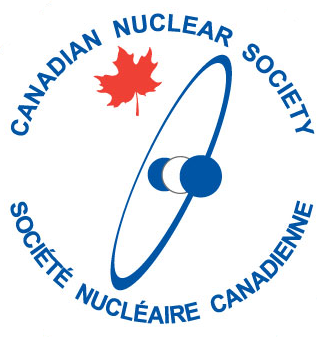Where are Canada’s reactors located?
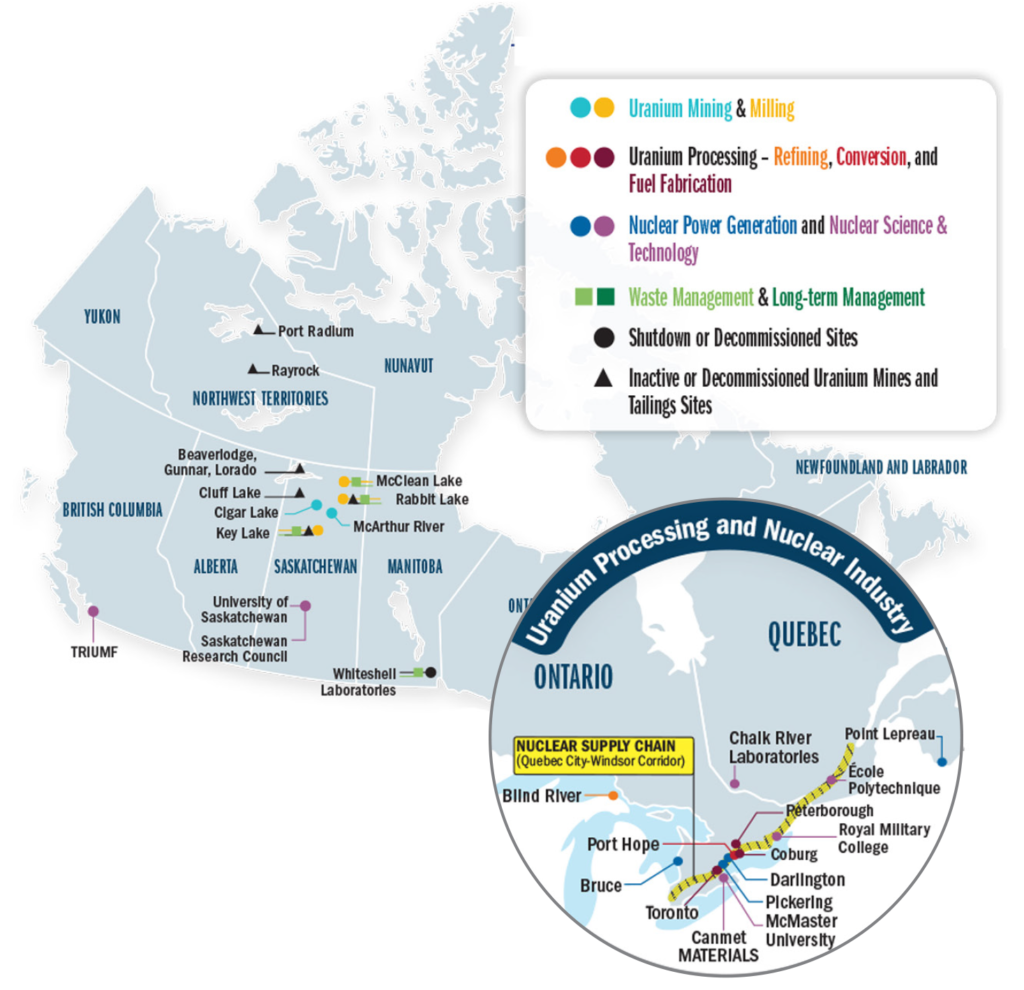
Canada’s self-sufficient involvement in the nuclear industry from mining, refining, generation, research and waste management
Bruce Nuclear Generating Station, Ontario
The Bruce Nuclear Generating Station, initially constructed in 1977, is an 8-core CANDU pressurized heavy-water reactor. It is Canada’s largest reactor, and up until 2016, it was the world’s largest fully operational power plant. It was the first nuclear power plant in the world to produce 1000 TWh in a year. It is also the world’s largest supplier of the useful isotope, Cobalt-60. To learn more visit: https://www.brucepower.com/isotopes-and-medical-innovation/cobalt-60-isotopes/
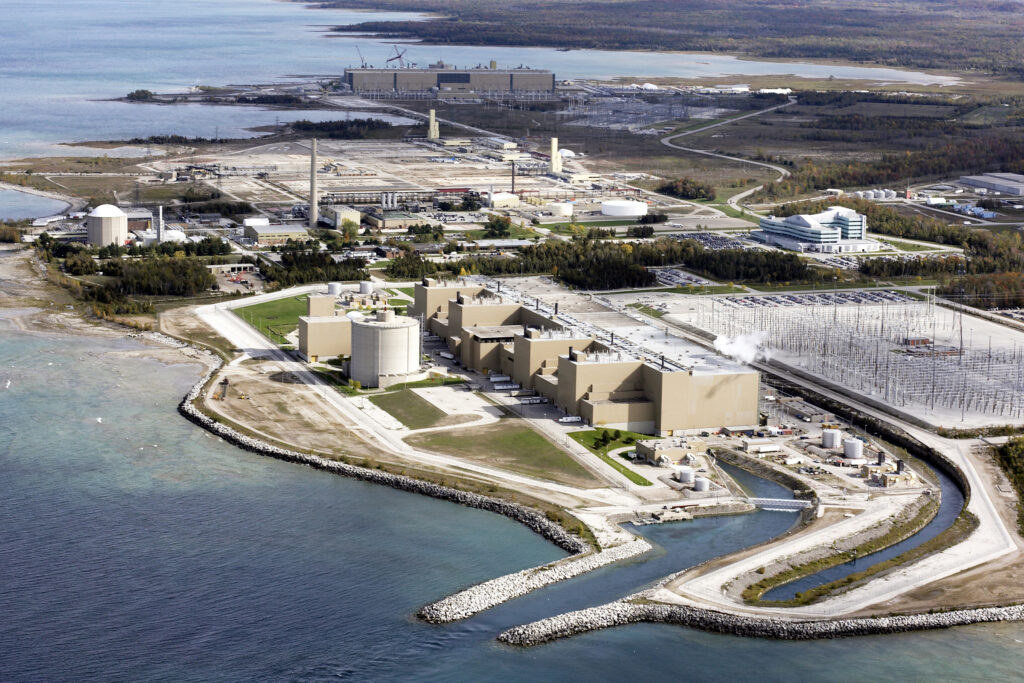
Pickering Nuclear Generating Station, Ontario
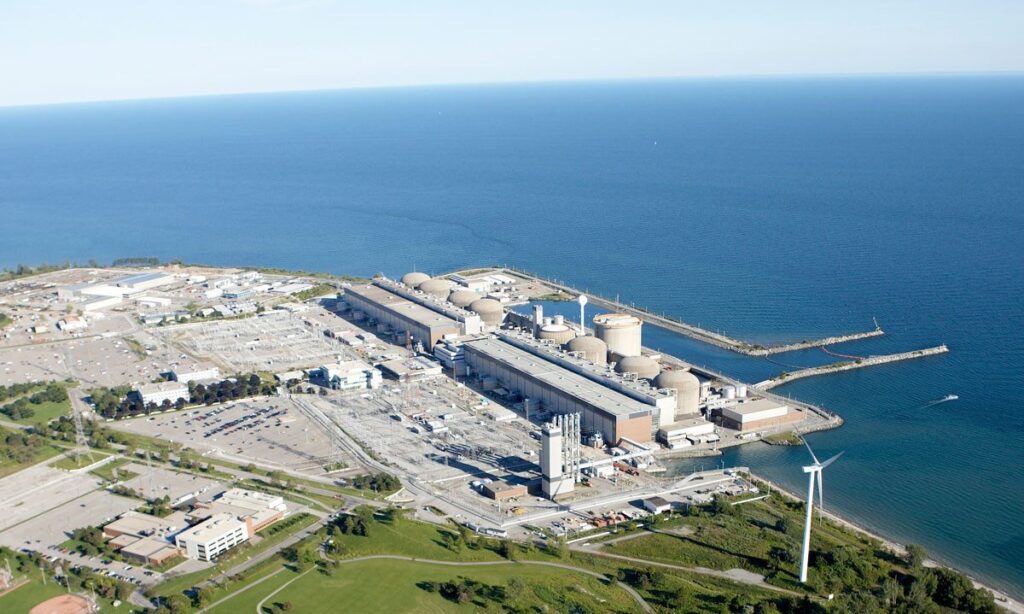
The Pickering Nuclear Generating Station was commissioned in 1971, making it one of the world’s longest-running nuclear power plants. This power plant has eight CANDU reactors with six units currently operational. For a long time, the Pickering plant held the record for longest-running thermal generation plant without having to shut down (894 continuous days from April 29, 1992, to October 7, 1994).
Darlington Nuclear Generating Station, Ontario
The Darlington Nuclear Generating Station first went online in 1990. Four CANDU reactors create electricity at this power station. The Darlington plant currently holds the record for the longest operation of any type of thermal generating plant, at 1,106 consecutive days (roughly 3 years!). [7] In 2008, the plant achieved a 94.5% capacity factor, making it one of the highest achieved capacity factors of any electricity-generating facility in the entire world.
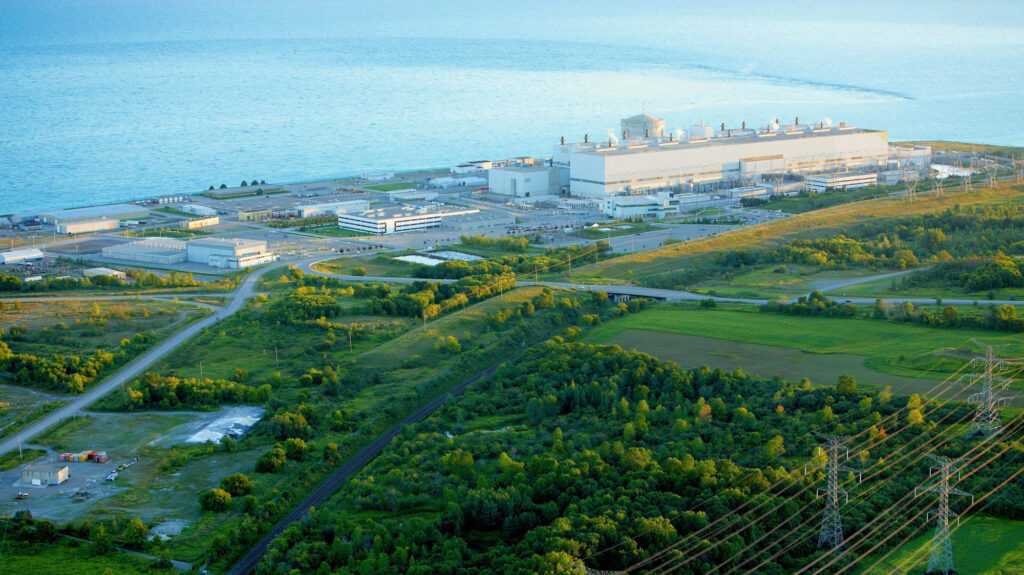
Point Lepreau Generating Station, New Brunswick
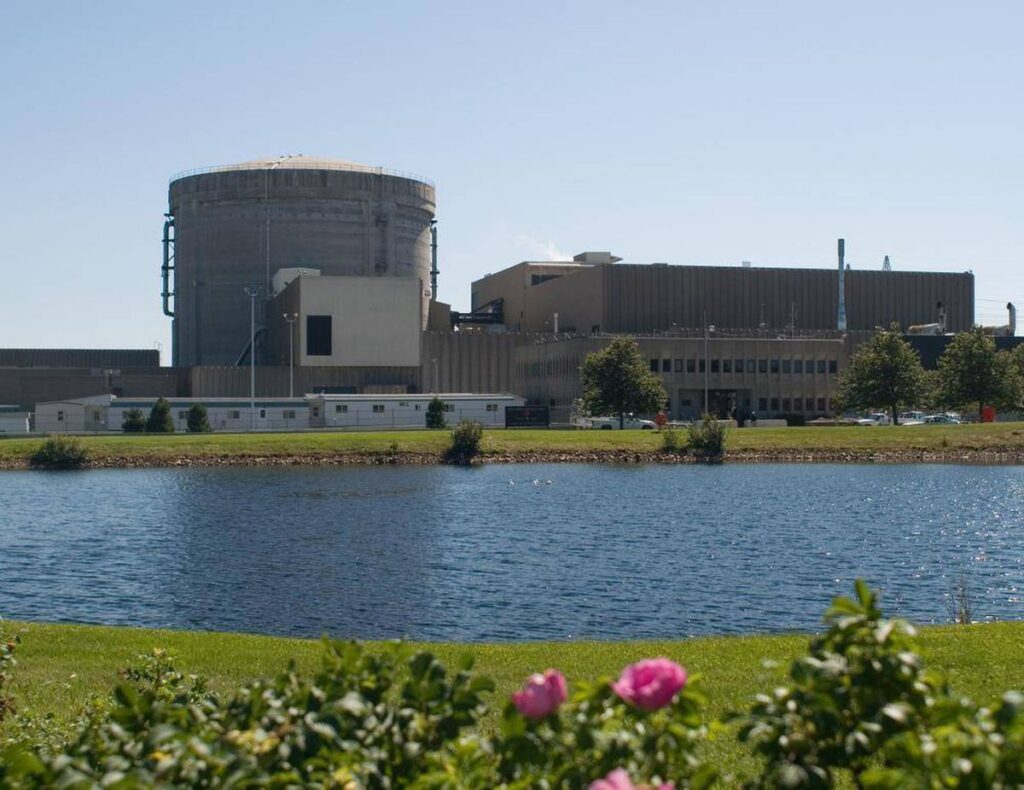
Point Lepreau Generating Station started putting electricity on New Brunswick’s grid back in 1983. It has one CANDU pressurized heavy-water reactor, which supplies 40% of New Brunswick’s electricity.
Point Lepreau generating station is a proposed site to build some next-generation Small Modular Reactors (SMRs). To read more visit the SMR page.
Research Reactors
The SLOWPOKE
The SLOWPOKE research reactor is at École Polytechnique in Montréal. Commercial operation commenced in 1976 with 93% enriched fuel. In 1997 the reactor was refuelled using 20% enriched uranium, producing 20 kWs at its peak. It has since renewed its licence as a Low-Enriched Uranium reactor and continues to be used for research, education, and neutron/isotope generation.
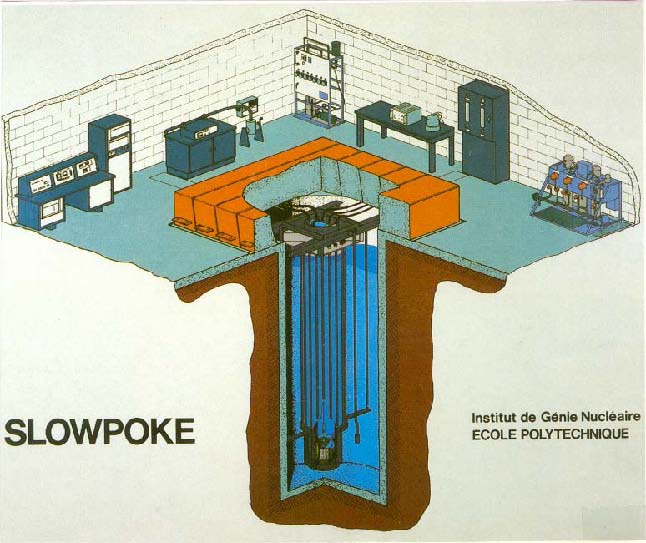
The McMaster Nuclear Reactor (MNR)
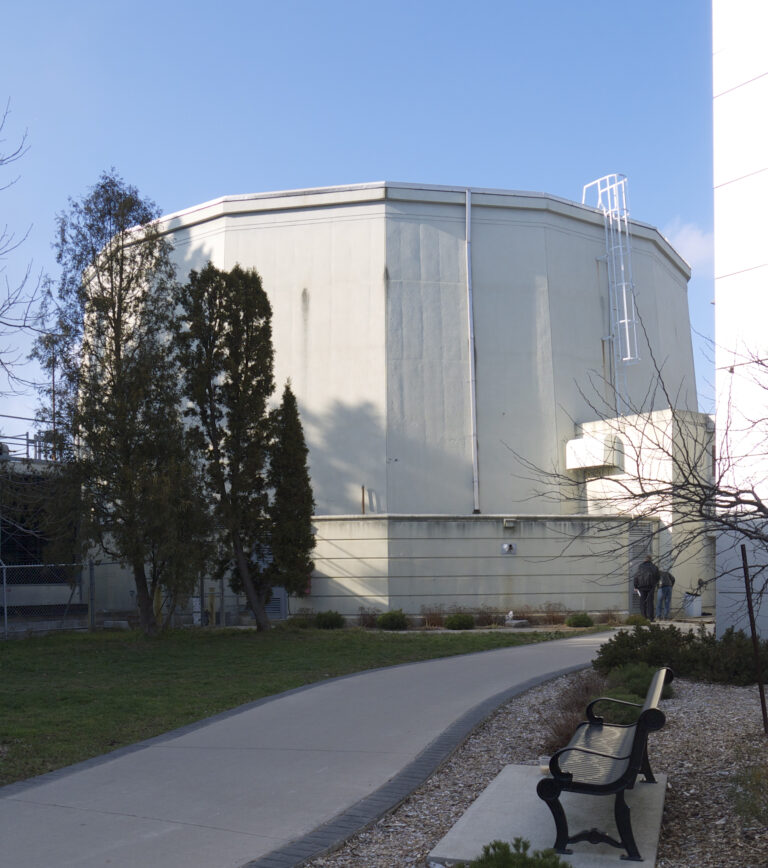
The McMaster Nuclear Reactor (MNR) is located at McMaster University in Ontario. It was first commissioned in 1959 as the first university-based reactor in the British Commonwealth. It currently has a 5 MW peak operation, making it considerably more powerful than other research reactors. Although in comparison it is dwarfed by generating stations. MNR has an important role in medical isotope production. The McMaster Nuclear Reactor produces about half of the world’s supply of iodine-125, an essential cancer treatment substance. Additionally MNR reactor is able to perform neutron radiography similar to the SLOWPOKE-2 in Kingston.
The SLOWPOKE-2
The SLOWPOKE-2 research reactor is owned and operated by the Royal Military College in Kingston, Ontario. It was commissioned in 1985, as the first Low-Enriched Uranium reactor. This reactor is a sealed container design still operating on its original fuel. It just recently got approval for refueling to continue its important research. This SLOWPOKE reactor differs from other research reactors due of a modification that allows it to perform neutron computed tomography (CT), which is similar to the an X-ray CT scan you may get at a hospital but is often used to look for defects in mechanical parts such at aircraft wings.
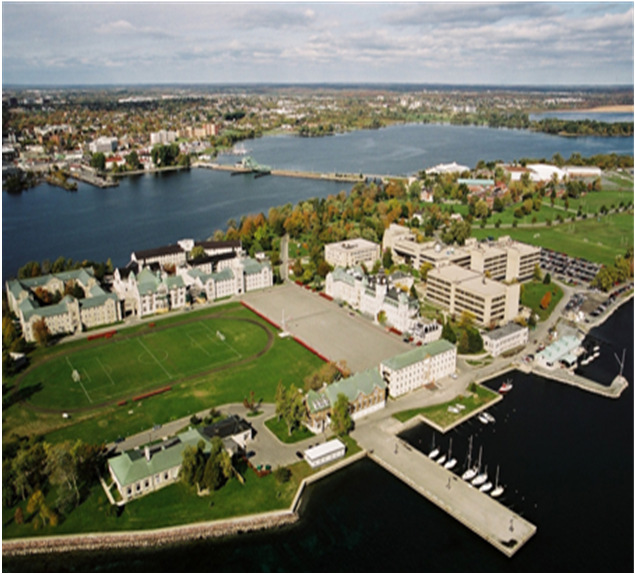
Zero Energy Deuterium 2
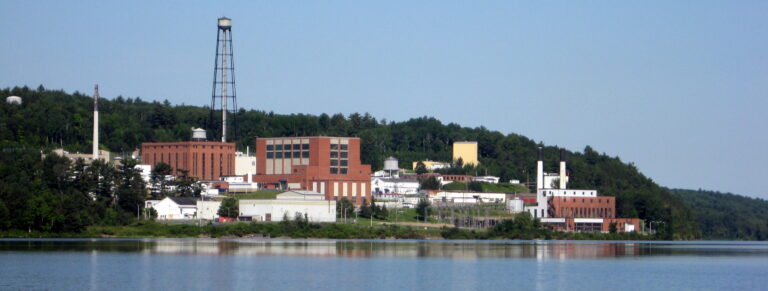
Zero Energy Deuterium 2 is a research reactor built at the Chalk River Laboratories. It first went online in 1960 and acted as a testing ground for the future CANDU design. It is still used to this day to test different configurations and simulate accident scenarios. In 2010, it was honoured as a nuclear historic landmark by the American Nuclear Society.
Citations
- https://www.nrcan.gc.ca/science-and-data/data-and-analysis/energy-data-and-analysis/energy-facts/uranium-and-nuclear-power-facts/20070
- https://www.680news.com/wp-content/blogs.dir/sites/2/2015/12/bruce-power.jpg
- https://www.nordion.com/products/medical-grade-cobalt-60/
- https://www.nationalobserver.com/sites/nationalobserver.com/files/img/2021/04/07/ontario_power_generation_inc_opg_s_pickering_nuclear_to_operate_1.jpeg
- https://www.power-eng.com/nuclear/heysham-2-nuclear-unit-breaks-continuous-run-world-record/
- https://www.opg.com/wp-content/uploads/2019/04/Darlington_Nuclear_NorthSide_Aerial-e1555274038602-2000×1124.jpg
- https://world-nuclear-news.org/Articles/German-Canadian-reactors-set-new-world-records
- https://www.theglobeandmail.com/resizer/g3zwbcOK9g82LiWiB1WRKiLOY80=/1200×0/filters:quality(80)/arc-anglerfish-tgam-prod-tgam.s3.amazonaws.com/public/PT4GGWL3L5HUHDZIVKI4OBVTLU
- https://www.world-nuclear-news.org/Articles/New-Brunswick-affirms-support-for-Point-Lepreau-SM
